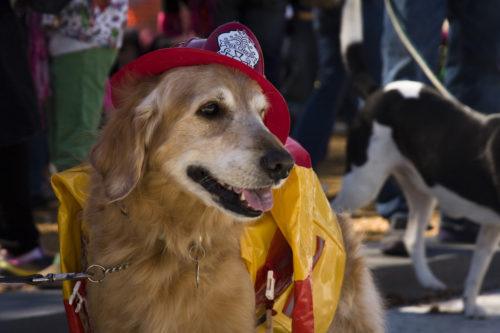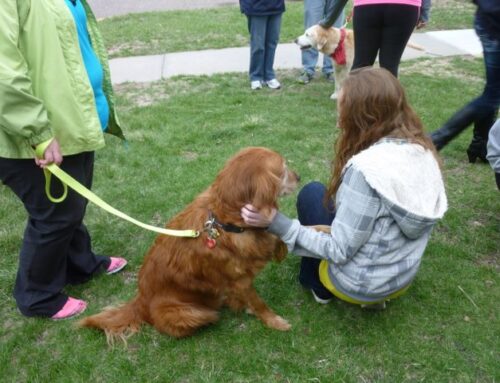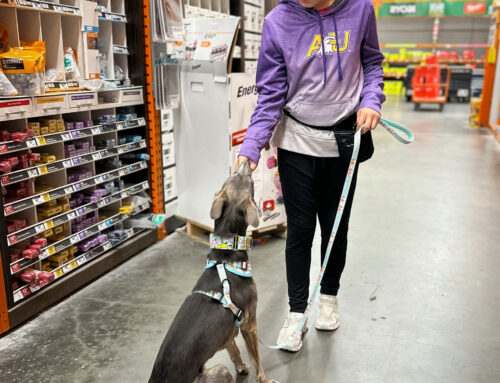Day after day, firefighters and other first responders risk their lives for people they’ve never met. In a 24-hour shift, they are exposed to all sorts of traumatic events, from wildfires they can’t control to patients they can’t save, as hard as they try. And although these men and women are incredibly strong, sometimes they, too, need to relax and decompress from the horrors they’ve seen at work. Enter therapy dogs.
Unlike service dogs, which perform tasks for their disabled owners, or emotional support dogs, which provide therapeutic benefits to owners with diagnosed mental or emotional disabilities, therapy dogs offer comfort to various people at the direction of their handler. Because firefighters work and live as a group for up to 48 hours at a time, a therapy dog’s ability to provide consolation and support to multiple individuals make them perfect as a firehouse dog or a welcome visitor after a difficult day.
How Therapy Dogs Help
Therapy dogs are specially trained by their owners to help stressed-out people feel relief from their problems or anxieties — at least temporarily. Research by UCLA Health confirmed that interaction with therapy dogs provides both mental and physical health benefits, including:
- The release of hormones that play a part in elevating moods
- Lower anxiety and reduced loneliness
- Mental stimulation
- Lower blood pressure and improved cardiovascular health
- Slower breathing.
Additionally, a study by the American Journal of Critical Care found that just 12 minutes with a therapy dog provided greater neurological and psychosocial improvements in heart patients than a 12-minute visit with a human volunteer. However, it doesn’t take a scientific study to prove what dog owners already know — playing with or petting your pup simply makes you feel better. Today, therapy dogs are sharing their love and calming people of all ages in hospitals, elementary schools, college campuses, and nursing homes…so why not add firehouses and fire scenes to that list?
Firefighters need Therapy Dogs
In the last days of December 2017, California firefighters were dealing with not only the unrelenting exhaustion of fighting the state’s largest-ever wildfire for weeks without a break, but also trying to cope with the loss of one of their own. Firefighter Cory Iverson, 32, had died two weeks earlier while battling the blaze near Fillmore, California. When Denise Fitzgerald, an ATD member, heard about the situation, she quickly organized a group of seven therapy dogs and their owners to join her in visiting the firefighters’ base camp to provide a much-needed opportunity for emotional relief. Fitzgerald commented that visiting and playing with these dogs — which included an 8-month-old Irish wolfhound and a 2-year-old English toy spaniel — provided the overworked and grieving firefighters with a brief period of normalcy. Many shared photos with the handlers of their own pets at home.
Fire departments across the country are either welcoming therapy dogs to their scenes or adopting them as full-time companions at the station. In Fairfax County, Virginia, Wally, a 10-month-old goldendoodle, is a permanent member of the team at Station 32. With designated firefighters on all three shifts specially trained to be Wally’s handlers, Wally can now sense when firefighters are stressed, and he goes directly to them, without them having to reach out for help.
In North Lawrence, Ohio, fire department members looking for a ray of hope turn to a therapy dog they adopted in December 2016 after finding the pup abandoned, emaciated, and frostbitten. Aptly named Halligan after a firefighting tool that helps first responders break down doors and other barriers, the dog has increased department morale “more than tenfold” according to firefighters.
Finding a Fire Station Therapy Dog
There are dozens of stories like these — all equally heartwarming. It doesn’t matter how the union between firefighters and therapy dog is instigated; firefighters have rescued dogs from kill shelters, strays have wandered up to firehouses, firefighters’ pets have been trained as therapy dogs, nonprofits have donated dogs to the station after recognizing a need, etc. What’s important is that these therapy dogs have shown real, undoubtedly beneficial results for these people who see more trauma and tragedy than anyone else.
Therapy dogs can come in all sizes, ages, and breeds. Even the traditional firehouse dog — the venerable and distinguished dalmatian — can be trained to provide emotional support. The best potential therapy dogs are pups that are well-mannered, well-behaved, and generally get along with people. If your fire department, police department, 911 dispatch, or ambulance team is interested in either finding a therapy dog for permanent residence or even for a visit, or if you have a pet that you think would make a wonderful therapy dog for first responders, contact the Alliance of Therapy Dogs today to learn more about our training, testing, and certification programs.






